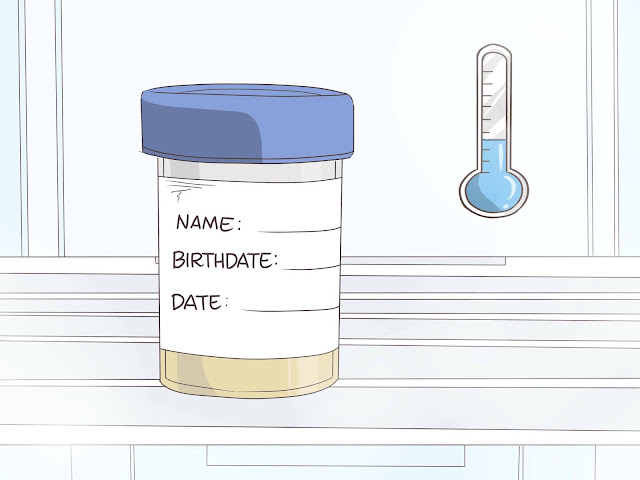Pyuria refers to the presence of pus cells in urine. The presence of bacteria in urine is called bacteriuria. Significant bacteriuria is usually accompanied by pyuria.
 |
| Urine container |
COMMON PATHOGENS FOUND IN PYURIA AND BACTERIURIA:
| BACTERIA | GRAM POSITIVE: Staphylococcus saprophyticus, haemolytic streptococci, enterococci. |
| GRAM NEGATIVE: Escherichia coli, Proteus species, Pseudomonas aeruginosa, Klebsiella species, Salmonella typhi, Salmonella paratyphi, Neisseriae gonorrhoea. | |
| OTHER BACTERIA | Mycobacterium tuberculosis, Leptospira interrogans, Chlamydiae, Mycoplasma |
| FUNGI | Candida species |
| PARASITES | Schistosoma haematobium, Trichomonas vaginalis and occasionally Enterobius vermicularis, Wuchereria bancrofti and Onchocerca volvulus |
NOTES ON PATHOGENS OF PYURIA AND BACTERIURIA
- Bacteriuria without pyuria may occur in early UTI, diabetes, enteric fever, bacterial endocarditis.
- Pyuria with sterile urine culture may be found with renal tuberculosis, gonococcal urethritis, leptospirosis or when patient treated with antimicrobials.
- E. coli is the commonest cause of urinary infection. Women are more frequently infected than men.
- Pseudomonas, Proteus, Klebsiella infections often follows catheterization and gynaecological surgery.
- Urethritis (Infection of the anterior urinary tract) is mainly caused by N. gonorrhea, staphylococci, streptococci & Chlamydiae.
- M. tuberculosis is usually carried in the blood to the kidney from another site of infection.
- S. typhi & S. paratyphi can be found in the urine of about 25% of patients with enteric fever from the third week of infection.
- Excretion of bacteria is not associated with pyuria. Typhoid carriers may excrete S. typhi in their urine for many years. Carriers are more common in schistosomiasis endemic areas.
- In Leptospirasis, L. interrogans can be found in the urine from about second week of infection.
COLLECTION AND TRANSPORT OF URINE:
In a hospital with a microbiology laboratory:
- Midstream urine is collected for microbiological examination.
- Give the patient a sterile, dry, wide-necked, leak-proof container and explain the importance of collecting a specimen with as little contamination as possible.
- About 20 ml. of urine should be collected.
- Label the container with the date, the name and number of patient and the time of collection.
- Deliver the specimen to the laboratory as early as possible.
In a health centre for dispatch to a microbiology laboratory:
- If immediate delivery to the laboratory is not possible, the urine should be refrigerated at 4° C.
- If a delay in delivery of more than l hour is anticipated boric acid should be added to the urine (0. l gm/10 ml. of urine).
- The following changes occur when un-preserved urine is left at room temperature
- Any bacteria in the urine will multiply so that the bacterial count will be unreliable.
- If the organisms are urease-producing, the ammonia released will increase the pH of the urine which will result in the destruction of cells and casts.
- Bacteria will also breakdown any glucose present in the urine.
- Concentration of protein in the urine will be altered.
- If bilirubin is present this may be oxidized to biliverdin which will not be detected.
- Likewise, urobilinogen will not be detected because it will be oxidized to urobilin.
- If renal tuberculosis is suspected then —> Collect the first urine passed (entire specimen) on three successive mornings.
- The specimens should be stored 4° C. until all three urines have been collected.
Dipslides
- Commercially prepared Dipslides consist of media-coated disposable plastic slide-spoons.
- Inoculation is by immersing the slide-spoon in a container of urine or by allowing a flow of urine to pass over the medium.
- They are used to avoid the overgrowth of commensals when there is likely to be a delay in a specimen reaching the laboratory.
- Dipslides are however expensive, have a shelf-life of only about 4 months from manufacture, and in case of heavy growth, it might be difficult to isolate the pathogen for sensitivity testing.
- Preserving urine using boric acid is less expensive and also enables urine to be examined microscopically.

No comments:
Post a Comment